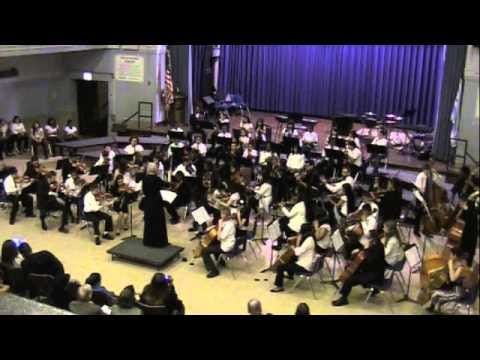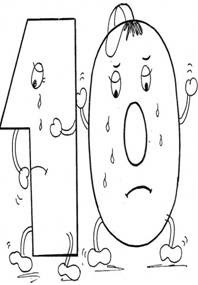It's 2023 now and those of you who have been in Chicago for a while know we're coming up on an awful anniversary. Ten years since the CPS Board of Ed, pushed by then-mayor Rahm Emanuel, unquestioningly and without the slightest scruples voted to close 50 schools.
It did not fix the budget as it was supposed to, and it did not improve academics for any child, and the main outcome that's been noted in research since is institutional grief.
So if you were here ten years ago, and you were a teacher, or had kids in CPS, this upcoming anniversary might be a little triggering. Those of us who were there were marching in the streets, gathering statistics, writing incessantly, calling the Board of Ed, speaking at Board of Ed and City Council meetings (and getting dragged from the podium), calling press conferences, trying to arrange meetings with anyone who would listen, going to Springfield, publishing research, filing lawsuits—all in a valiant but futile effort to somehow stop what we knew to be a terrible, very poorly planned decision.
That whole board is gone now, swept away in one move after then-CPS CEO Barbara Byrd-Bennett pleaded guilty to a whole separate set of crimes. That board was asleep at the wheel through the closings and also through the large scale bribery and fraud taking place right under their noses. While Byrd-Bennett was directing more than $20M to herself in a kickback scheme, she stood by nodding as Rahm droned on about civil rights and children trapped in failing schools and how choice will save everything. (I mean, if I had a set up like that, I too might have stood idly by bobbing my head.) She finished her prison sentence in June 2021.
There was no one who seemed to listen, to hear. I had my own chance with then-board member Carlos Azcoitia. I begged him to reconsider closing Lafayette Elementary. He knew almost nothing about the school—nothing. He didn't know it was a statewide model for autism education. He didn't know it had an astonishing orchestra—in which general ed kids played side by side with special ed kids. The performance below is from smack in the middle of this terrible time—March 2013, the very month CPS presented its final list of schools to be closed.
Azcoitia didn't know what a community anchor this school was. He nodded and listened to me, said he'd look into it. And did nothing.
I wrote a letter to legislators in Springfield and traveled there to watch a hearing, days before the final vote on the closings, where they grilled then-board member Jesse Ruiz, who could not answer legislators' questions and had nothing to say when they asked him: why are our constituents reaching out to us in such great numbers and so upset about this at the eleventh hour? What is going on here? Jesse Ruiz had little to say and smiled hopefully.
So many others did so much more. None of it was heeded.
And here we are ten years later with ghosts. Fifty neighborhood anchors pulled up, community hubs destroyed, familiar safe places for children shuttered. The scars of many of them still sit idle, weeds growing, fenced off, empty. And reader, be assured that by far most of the students affected by this scheme were Black and Brown children in already-disinvested communities. The promised reinvestment in these communities has not, for the most part, materialized. It usually doesn't.
Reconsidering this time still causes physical pain—to me—and I'm just a comfortable middle-class middle-aged white lady in a very well-invested neighborhood whose schools didn't actually close. Think what this hammer blow—ten years and ongoing—this community-disrupting grenade—think what it must’ve felt like for those who lived, and live, in those neighborhoods. Neighborhoods already struggling under decades of inadequate food access, inequitable bank loan access, lack of services, and badly under-resourced schools—many of which had already been through an education-reform wringer of turnarounds, takeovers, consolidations, and co-locations. (Isn't it baffling to consider that none of these disinvestments made things better before the closings came around to really send improvement through the roof?)
A lot of kids just fell through the cracks, disappeared from the school system, never got to their "welcoming school." Or their families left their neighborhoods or left Chicago altogether. CPS just lost track of them—hundreds of kids. You've seen the drop in Chicago's population, you've perhaps heard about the exodus of Black folks in particular. You may have read that Chicago's population drain probably has to do with taxes and regulations on business or property taxes being so high or that we're turning into "the next Detroit." May I suggest this other possibility: that destroying 50 neighborhoods—finally, completely—just might have had something to do with the problem. And it's a problem with a rolling, ongoing impact.
I want to spend the next few months looking back, remembering—what it was like from the time of the first announcement of a school closure list of 330 schools in the fall of 2012, through the absurd, ironically titled community hearings that lasted from December through April, through the winnowing of the list down to 129, then to 51, to the final chaotic day of the Board of Ed's vote in which the names of the 50 schools closed were not even read aloud. I'll be reposting some of my old pieces from Chicago Public Fools. And I’ll feature some of the prominent folks who fought this unwinnable battle with valor and grace. Some of them continue the fight to defend public schools—which are now, it seems impossible to consider, in greater jeopardy than ever before.
As we look back, it might become clearer what this ten year anniversary means—what has happened in the long wake of the school closings. I'd love to hear from you as well, your recollections and reactions, how it went with your own families and your own neighborhood schools.
And let's convey a message. We cannot allow what happened in 2013 to happen here ever again. Our city cannot sustain another blow like this. The neighborhoods in which the schools closed still need investment and support. They weren’t fixed by school closings. They are more broken. To whomever the next mayor is: face this ugly reality. Look at it. Deal with it. Acknowledge it, apologize for it. And work to fix it.



